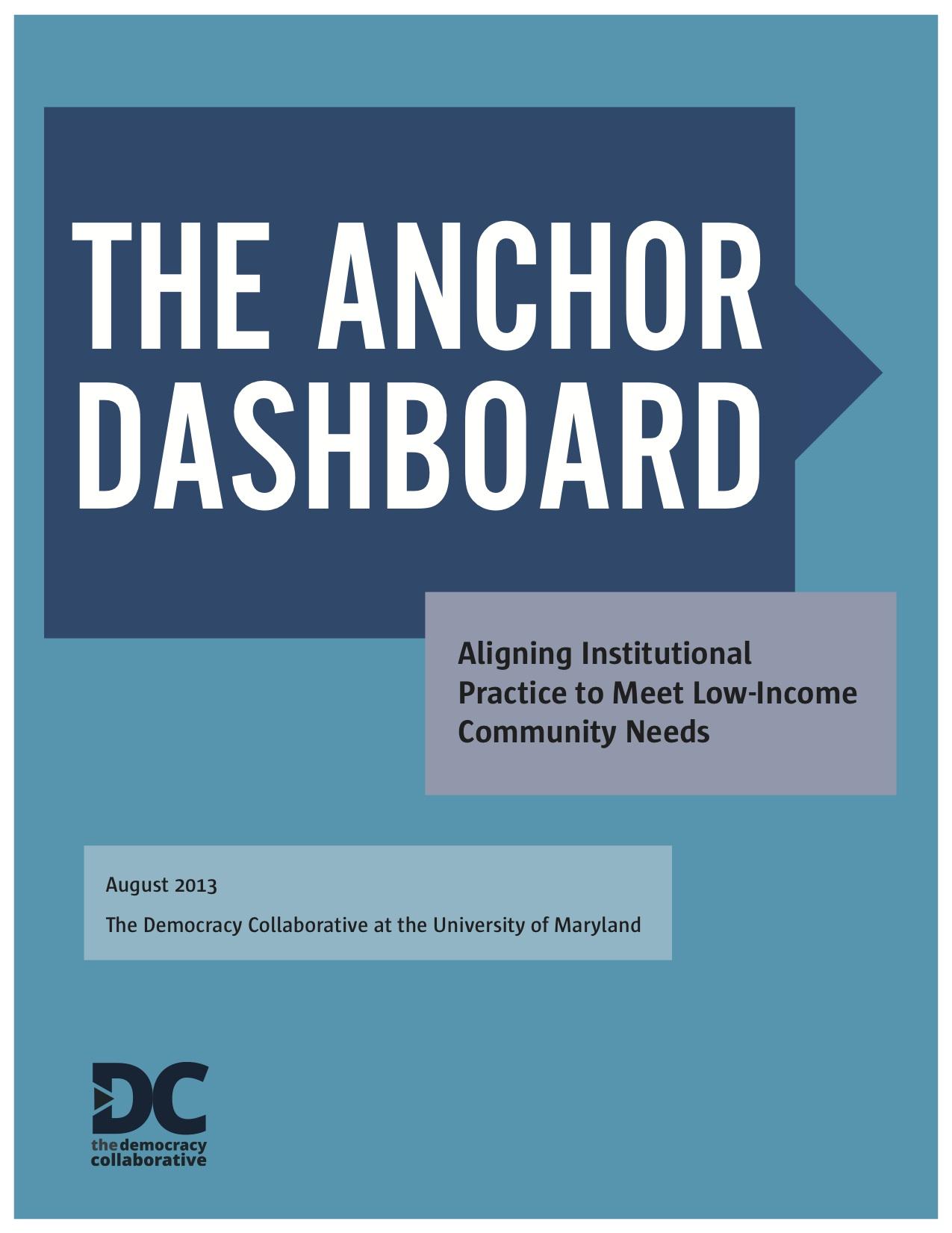This study seeks to introduce a framework that can assist anchor institutions in understanding their impact on the community and, in particular, their impact on the welfare of low-income children and families in those communities.
Anchor institutions are place-based entities such as universities and hospitals that are tied to their surroundings by mission, invested capital, or relationships to customers, employees, and vendors. These local human and economic relationships link institution well-being to that of the community in which it is anchored. Increasingly, anchor institutions across the nation are realizing this interdependence and are expanding their public or nonprofit mission to incorporate what we call an “anchor mission.” In other words, they are consciously applying their long-term, place-based economic power, in combination with their human and intellectual resources, to better the long-term welfare of the communities in which they reside.
One key driver behind this shift is globalization. Anchor institutions, by definition, have always been largely place-bound. But before globalization, corporate, for-profit employers moved much less frequently and, typically, local business leaders provided the locus of civic leadership. Today, however, a combination of corporate consolidation (as seen in banking and other sectors) and growing corporate mobility has left a civic vacuum.
Stepping into the vacuum, in many cities, are anchor institutions. This trend is abetted by the fact that health care and education are gaining in their share of national gross domestic product. Further, anchor institutions are among the leading employers in nearly all major U.S. cities.
There are other drivers as well. Prominent among these is a growing body of research that has found poverty to be at the root of health and educational disparities. Increasingly, it is hard to argue that it is even possible to achieve basic health and education objectives without addressing these root causes.
Today there is widespread recognition among anchor institutions themselves that community economic development is part and parcel of what they do. As a result, anchor institution initiatives have proliferated. Increasingly, anchor institution leaders publicly say they have an anchor institution mission to improve the well-being of their surrounding community.
But how do we know that these initiatives are working? The truth is that most anchor institutions do not know. This study seeks to introduce a framework that can assist anchor institutions in understanding their impact on the community and, in particular, their impact on the welfare of low-income children and families in those communities.
Anchor institutions engage with their communities in complex and multi-faceted ways. They hire staff, procure goods and services, partner with local organizations, collect and disseminate important research findings, and share an array of resources. At the same time, relationships with their surrounding areas can be strained by conflicting needs and stark disparities. Although most institutions assess their impact at the level of individual programs, the field lacks agreed-upon methods for measuring or evaluating their broader impact on addressing disparities in community economic development, public health, education, and the environment.
This paper, made possible by support from the Annie E. Casey Foundation, introduces a preliminary dashboard of outcomes and indicators as a way to begin a conversation about developing such measures. The dashboard builds on existing knowledge about measurement efforts already underway within anchor institutions to understand their impact on low-income children, families, and neighborhoods. The proposed dashboard also reflects findings from in-depth interviews conducted in 2012 with 75 leaders of anchor institutions, national nonprofit organizations, federal agencies, and community organizations. Supplementing these interviews, we also drew upon 32 additional Democracy Collaborative interviews of hospital leaders, most of which were conducted in 2011.
